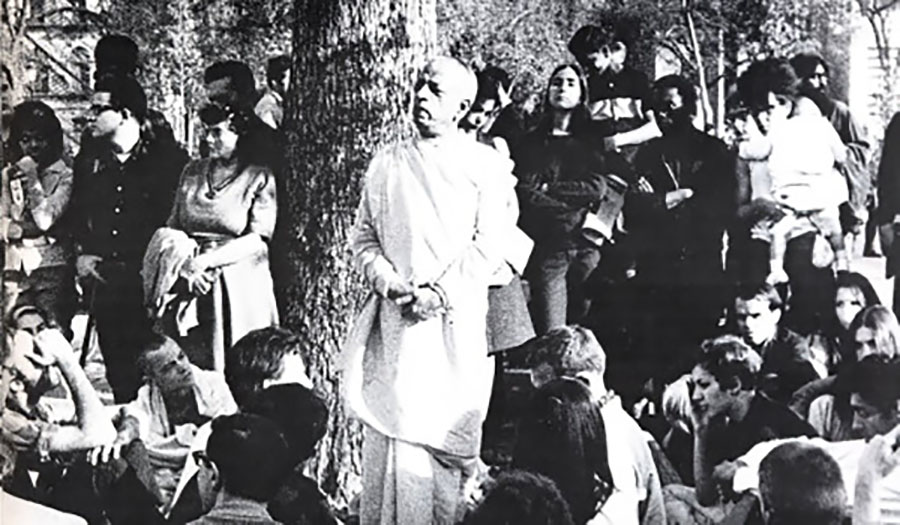ISKCON 50 Meditations: October 9, 2016
By Satsvarupa dasa Goswami | Окт 09, 2016

Wisps of ’66 Memories
One time in Prabhupada’s room, Lefkowitz asked, “Swamiji, when someone paints a portrait of Krishna, is it the artist’s conception of Him?” Prabhupada replied, “Yes.” That answer helped me because I knew that you were supposed to think and believe that Krishna was absolutely present in His picture. But on the other hand, the pictures were obviously stylized. They used techniques of Indian art, and you could see the weaknesses in the paintings, etc. This created a jarring problem. But Prabhupada said that it was the artist’s conception; however, the form of Krishna they painted was based on facts from the sastra.
Another time one of the boys was reading something to Swamiji from the Bible. The passage referred to a prophet’s lineage with worship and respect for the forefathers. When the person was described (let us say his name was Jacob), his name was given in connection with his forefathers. It was something like, “Jacob, a man of God, whose forefathers were so-and-so.” As soon as this passage was read, Swamiji said, “Yes, this is the way in spiritual life. One refers to himself in terms of his previous teachers and forefathers.” Prabhupada approved of the парампары principle in this passage of the Bible. He then gave examples from Vedic literature. He told the story of Lord Brahma who went to visit Lord Krishna in Dvaraka. At first Brahma was not allowed in, and the doorkeeper asked, “Which Brahma are you?” Brahma replied, “I am the father of the four Kumaras.” He identified himself in relationship to recognized devotees, the four Kumaras.















